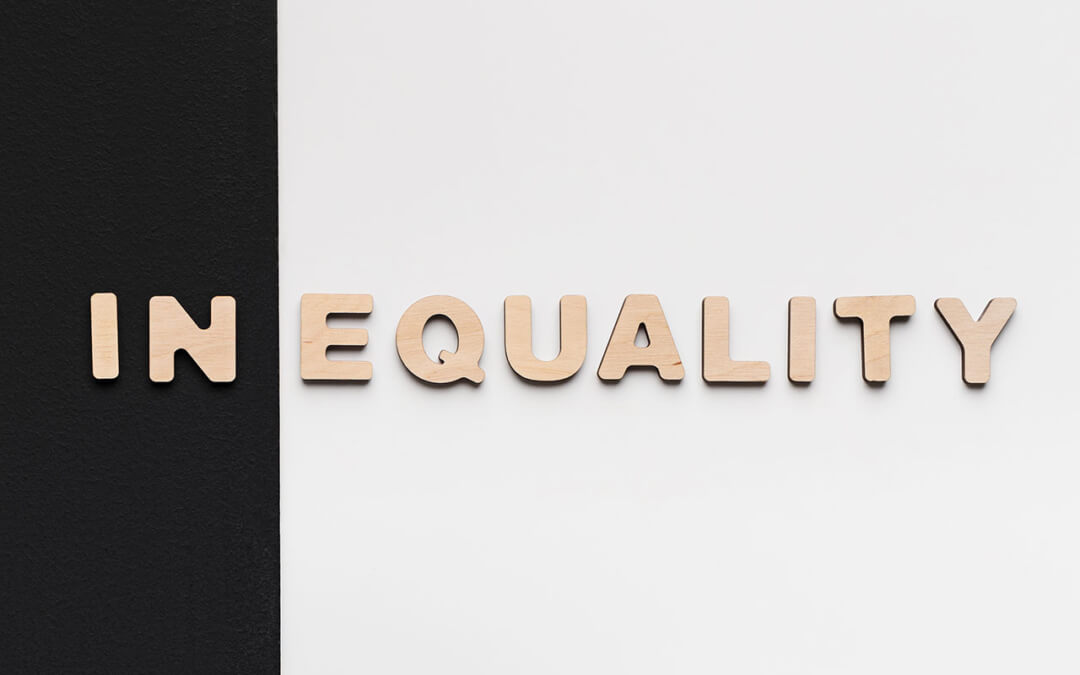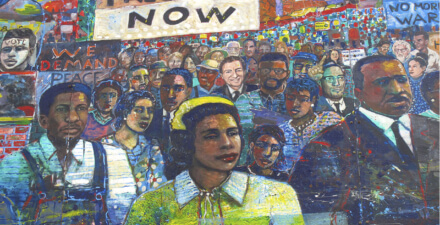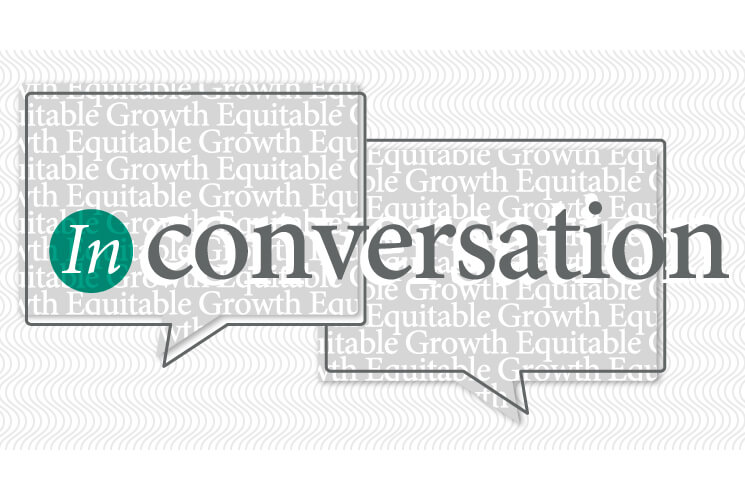Addressing the U.S. racial economic mobility and inequality divides

Economic mobility in the United States has been declining over the past half-century at the same time that economic inequality has been rising. Research by Harvard University economist and former Equitable Growth Steering Committee member Raj Chetty and his co-authors shows that rates of absolute intergenerational mobility have precipitously declined in the country during the latter part of the 20th century. People born in 1940 had about a 90 percent chance of growing up to earn more than their parents, but people born in 1980 had only about a 50 percent chance. Chetty also finds that Black Americans are more likely to experience downward mobility than White Americans, and that differences in family education, wealth, and marriage patterns cannot explain this Black-White mobility divide.
Intentional policy action is necessary to correct these systemic and institutional barriers facing Black Americans. Just as government policy helped create these racial disparities in the first place via legalized discrimination, redlining of housing, and the often discriminatory impact of the criminal justice system and incarceration, policies are needed now to promote mobility and begin to address the legacies of these racially discriminatory structures. These policy solutions include:
- Improving family income security by expanding refundable tax credits and by fully funding Section 8 Housing Choice Vouchers to make them available to all who qualify
- Supporting wealth accumulation for low-wealth families, such as through proposals for “baby bonds”
- Addressing racial inequities in credit access and student debt
- Redirecting public investment from the criminal justice system to education and social services
These policies can be implemented at the federal level, such as through reforms to the Community Reinvestment Act to improve access to credit and reforms to the Department of Education’s stewardship of student loans, as well as at the state and local level through budgetary decisions related to police, prison, and education funding.
Key resources
“Reconsidering progress this Juneteenth: Eight graphics that underscore the economic racial inequality Black Americans face in the United States,” by Liz Hipple, Shanteal Lake, and Maria Monroe
This post features graphics on Black-White disparities in wages, intergenerational mobility, wealth, homeownership, incarceration, and health. The post demonstrates how policy decisions and racial discrimination created and continue to perpetuate economic disparities between White and Black Americans and offers policies to address the structural barriers driving these disparities.
“Race and the lack of intergenerational economic mobility in the United States,” by Bradley Hardy and Trevon Logan
This post explains that geographic and racial differences in economic mobility are particularly important from a policy perspective for three reasons. First, racial differences in mobility can exacerbate racial differences in other areas such as in housing, education, and health. Second, inequalities in opportunity are antithetical to our nation’s creed of equal opportunity for all. And third, structural differences in mobility limit the potential for overall U.S. economic growth.
This essay first examines the historic links between intergenerational economic mobility and race and income inequality—trends heavily influenced by changing patterns in geographic mobility—and how these trends are tied to explicit policy decisions in the past that persist today in terms of housing, education, and health inequality among low- and middle-income Black Americans. The authors discuss educational, housing, and income remedies for persistently low intergenerational economic mobility among Black Americans and how these policies could be put into action and paid for.
“Overcoming social exclusion: Addressing race and criminal justice policy in the United States,” by Robynn Cox
This essay discusses how the exponential growth in incarceration in the United States over the past 50 years has been due to more punitive criminal justice policies that tried to address racial and economic inequality through the criminal justice system instead of social programming. Cox calls for U.S. policymaking to shift toward addressing the root causes of racial inequality and poverty. One first step would be to conduct an audit of current federal crime-control policies and funding to eradicate policies that lead to greater racial disparities within the criminal justice system.
“Low intergenerational mobility in the United States shows impact of race and public policy,” by Liz Hipple
This research analysis compares intergenerational mobility in the United States versus Canada. The author highlights findings showing that despite the United States having higher average incomes than Canada, areas of particularly low mobility are concentrated on the U.S. side of the border, cover a large proportion of the U.S. population, and are driven by racial disparities in mobility between Black and White Americans. One explanation for why this pattern is observed almost exclusively in the United States is offered in another piece of research by University of California, Berkeley economist and Equitable Growth grantee Ellora Derenoncourt , who finds that as Black Americans migrated from the South, Northern cities decreased their investments in all public goods other than policing.
Top experts
- Liz Hipple, senior policy advisor, Washington Center for Equitable Growth
- William Darity, Jr., Samuel DuBois Cook professor of public policy, African and African American studies, and economics, Duke University
- Darrick Hamilton, incoming Henry Cohen professor of economics and urban policy, The New School
- Bradley Hardy, associate professor of public administration and policy, American University
- Ellora Derenoncourt, assistant professor in the Department of Economics and the Goldman School of Public Policy, University of California, Berkeley
- Trevon Logan, Hazel C. Youngberg Trustees distinguished professor of economics, The Ohio State University
- Robynn Cox, assistant professor at the USC Suzanne Dworak-Peck School of Social Work
To view the other policy sheets in this series, please click here.







